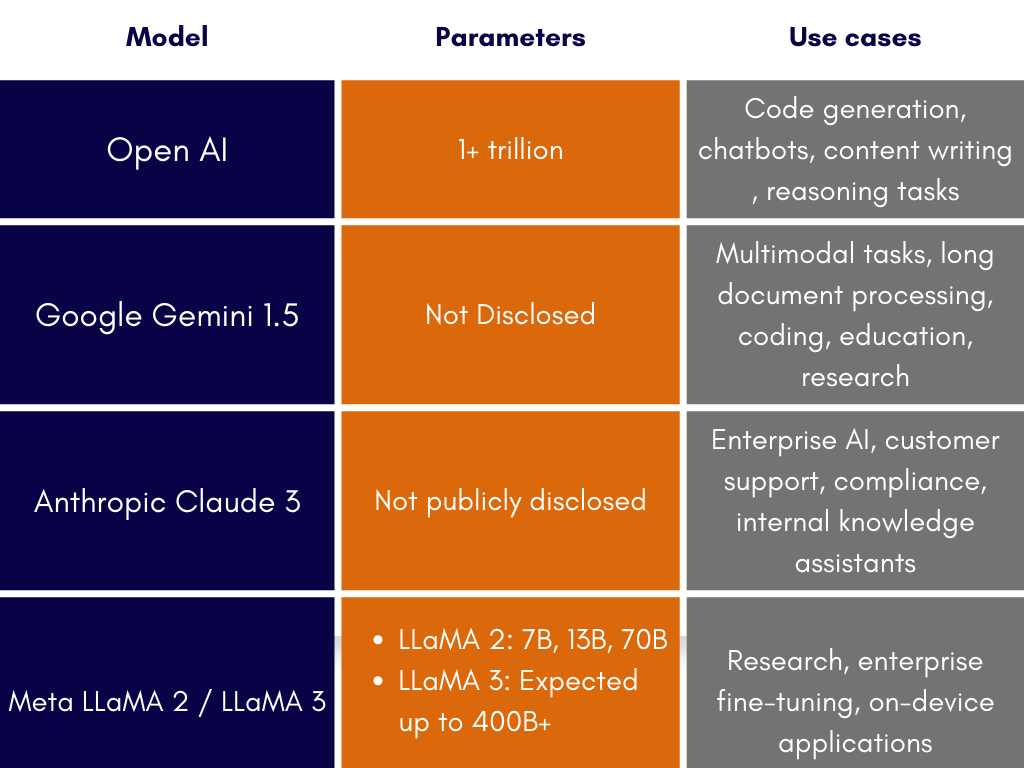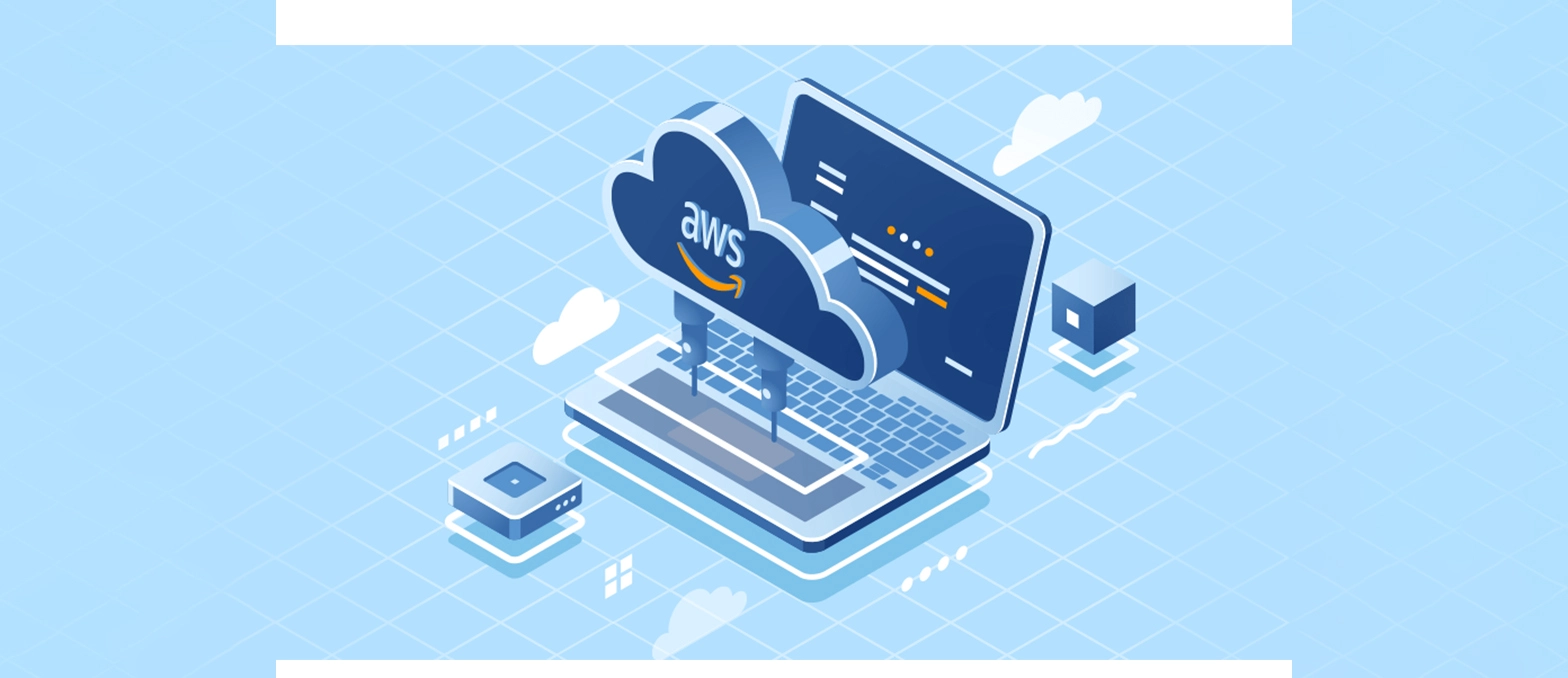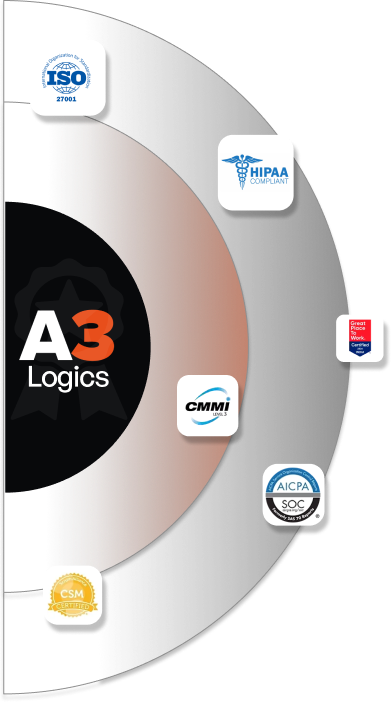Artificial intelligence has evolved over the years and helped LLM to serve the purpose of different applications across industries. Now, you can see LLM applications developed using AI systems to come up with tools that can assist in the process of human-like text. It is important that you understand LLM app development in detail to make the most out of it and enhance your chances of success.
This is why we are here to help you with detailed guides related to these aspects and make it easy for you to proceed ahead covering all the aspects right concepts to deployment. So, read on and get complete clarity related development of LLM apps whatever be your industry of service.
Table of Contents
Brief Overview of LLMs
The need for LLMs has grown as companies look more and more to improve consumer experiences, simplify processes, and get data insights. Valuable tools in industries including healthcare, banking, and education, these models may do activities including content generation, sentiment analysis, and even coding support.
For developers, companies, and organizations hoping to use generative artificial intelligence, knowing the complexities of massive language model building is absolutely vital. Essential factors, important development process stages, and future trends in this fascinating area will be covered in this guide. Whether your organization is a startup or an enterprise, this post will provide you the information to start your LLM path properly.
Advanced artificial intelligence systems meant to process and produce human-like text are large language models. Primarily employing neural networks to grasp the complexity of language, they are founded on deep learning architectures. Some important figures below show the relevance and influence of LLMs:
- The global AI market, which includes LLMs, is projected to reach $390 billion by 2025.
- LLMs can generate up to 50% more content than traditional methods, significantly enhancing productivity.
- Recent models have achieved over 90% accuracy in various NLP tasks, showcasing their capabilities.
- 70% of enterprises are expected to adopt LLMs by 2024 to improve customer engagement.
Essential tools in the field of generative AI development, these models work by examining large datasets, identifying trends, and producing consistent replies.
Importance of LLM in Various Industries
LLMs are transforming various industries by enhancing efficiency and enabling innovative applications. Their ability to understand and generate text has made them pivotal in several fields. Below are some key areas where LLMs are making a significant impact.
Healthcare
In healthcare, LLMs assist in diagnosing conditions by analyzing patient records and literature, generating reports, and even providing personalized treatment plans. They help healthcare professionals streamline workflows and improve patient outcomes, making them indispensable in modern medical practices.
Finance
In the finance sector, LLMs are used for risk assessment, fraud detection, and customer service automation. They can analyze financial reports and market trends, providing insights that help companies make informed decisions. This leads to improved efficiency and reduced operational costs.
Education
LLMs are revolutionizing education by offering personalized learning experiences and intelligent tutoring systems. They can generate educational content, assess student performance, and provide real-time feedback, enhancing the overall learning experience and making education more accessible.
Marketing
In marketing, LLMs facilitate content generation, customer engagement, and data analysis. They help brands craft compelling narratives, optimize campaigns, and better understand consumer behavior, ultimately driving sales and improving brand loyalty.

Key Considerations Before You Go for an LLM App
Before diving into LLM application development, it’s essential to consider several factors that can significantly impact the success of your project. These considerations will help ensure that your LLM app meets your objectives and aligns with user needs.
Data Privacy and Security
Data privacy is paramount when developing LLM apps. Ensuring compliance with regulations like GDPR and CCPA is critical, as these laws govern how user data is collected and processed. Implementing robust security measures protects sensitive information and builds trust with users.
Model Selection
Choosing the right model is crucial for the performance of your LLM app. Factors such as the size of the dataset, the complexity of the tasks, and the computational resources available should guide your selection. Collaborating with a large language model development company can provide insights into the best models for your needs.
User Experience
A seamless user experience is vital for the adoption of your LLM app. Focus on designing intuitive interfaces and providing clear instructions to ensure users can navigate the app effortlessly. Regular feedback from potential users can help refine the design and functionality.
Scalability
Scalability is another key consideration in LLM app development. As user demand grows, your app should be able to handle increased traffic and data processing without compromising performance. Planning for scalability from the outset will save time and resources in the long run.
Key Steps to Develop an LLM App
Developing an LLM app involves several critical steps, each contributing to the overall success of the project. Understanding these stages will help streamline the process and ensure that your application meets user needs effectively.
>Define Objectives
Clearly defining the objectives of your LLM app is the first step in the development process. Identify the specific problems your app aims to solve and outline the desired features. This clarity will guide the entire development process and ensure alignment with user expectations.
>Data Collection and Pre-processing
Data collection is fundamental to the success of your LLM app. Gather a diverse dataset that reflects the language and context your app will operate in. Pre-processing this data involves cleaning, tokenizing, and structuring it for training, which is crucial for optimal model performance.
>Model Architecture Selection
Selecting the right model architecture is vital in large language model development. Consider factors such as the complexity of tasks, the size of the dataset, and the computational resources available. Choosing the appropriate architecture will significantly influence the efficiency and effectiveness of your app.
>Pre-training
Pre-training your model on a comprehensive dataset enables it to learn language patterns and structures. This step involves using unsupervised learning techniques to help the model understand context and semantics, laying the foundation for effective performance in specific applications.
>Fine Tuning
Fine-tuning the model is essential for adapting it to your specific use case. This process involves training the model on a smaller, domain-specific dataset, allowing it to learn nuances and improve accuracy. Proper fine-tuning enhances the model’s ability to generate relevant and coherent responses.
>Evaluation and Optimization
Evaluating and optimizing your LLM app is crucial for ensuring high performance. Use metrics such as accuracy, precision, and recall to assess the model’s effectiveness. Continuous optimization based on user feedback and performance metrics will enhance the app’s capabilities.
>Deployment
Deploying your LLM app involves integrating it into a production environment where users can access it. This step requires careful planning to ensure smooth operation and minimal downtime. Collaborating with a generative AI development company can provide valuable insights during deployment.
>Monitoring and Updating
After deployment, continuous monitoring is essential to ensure the app’s performance and security. Regular updates based on user feedback and technological advancements will help maintain the app’s relevance and effectiveness in a rapidly evolving landscape.
Cost and Features of an LLM App
Understanding the cost and features associated with LLM app development can help businesses make informed decisions. Various factors influence the overall expenses, and knowing what features to prioritize will ensure a successful application.
Development Costs
The cost of developing an LLM app varies based on several factors, including the complexity of the application, the technology stack used, and the expertise of the development team. Engaging a large language model development company can help provide a clearer cost estimate based on your specific needs and requirements.
Infrastructure Expenses
Infrastructure costs are another significant consideration. Depending on whether you choose cloud-based services or on-premises solutions, expenses can vary widely. It’s essential to assess your needs and budget accordingly to ensure optimal performance and scalability.
Feature Set
The features included in your LLM app play a critical role in its success. Consider functionalities such as natural language understanding, context awareness, and user personalization. Prioritizing these features will enhance the user experience and drive adoption.
Maintenance and Updates
Ongoing maintenance and updates are crucial for the longevity of your LLM app. Budgeting for regular updates and technical support will help ensure that your application remains effective and secure, adapting to the changing needs of users and technology.
Future of Application Development with Large Language Models
The top large language models are reshaping the future of application development, and new developments are happening at a breakneck speed. Developers and companies may maintain their competitive edge in this ever-changing market by being aware of rising trends.
Enhanced Personalization
As LLMs evolve, they will enable even greater levels of personalization in applications. By analyzing user behavior and preferences, these models can tailor experiences to individual needs, making applications more engaging and effective.
Integration with Other Technologies
Application development is about to undergo a revolution thanks to the combination of LLMs with other technologies like blockchain and the Internet of Things. More complex applications with improved security and real-time decision-making capabilities will result from this convergence.
Ethical Considerations
Ethical questions around LLM apps will become increasingly important as they are used more often. Developers and businesses will need to address problems including bias, openness, and user privacy if they are to gain trust and guarantee responsible use of artificial intelligence.
Collaborative Development
Future development methods will probably be more cooperative, with users, developers, and stakeholders working together to build apps. This strategy guarantees that LLM apps efficiently handle actual issues and promotes creativity.
Final Take
Hopefully you are clear about the different aspects related to LLM application development that represents a great opportunity for businesses and developers around the world. When you get complete understanding of the different aspects related to large language model development, then businesses can make the most out of generative AI to create innovative applications. All you need to do is to follow the above steps or guide to get your desired LLM applications without any difficulty whatsoever.
You can always consider taking the assistance of the experts in the business to gain the most out of LLM app development. If you are looking for experts to help you with the same, then you can consider connecting with the experts at A3Logics and get all the assistance you need.








